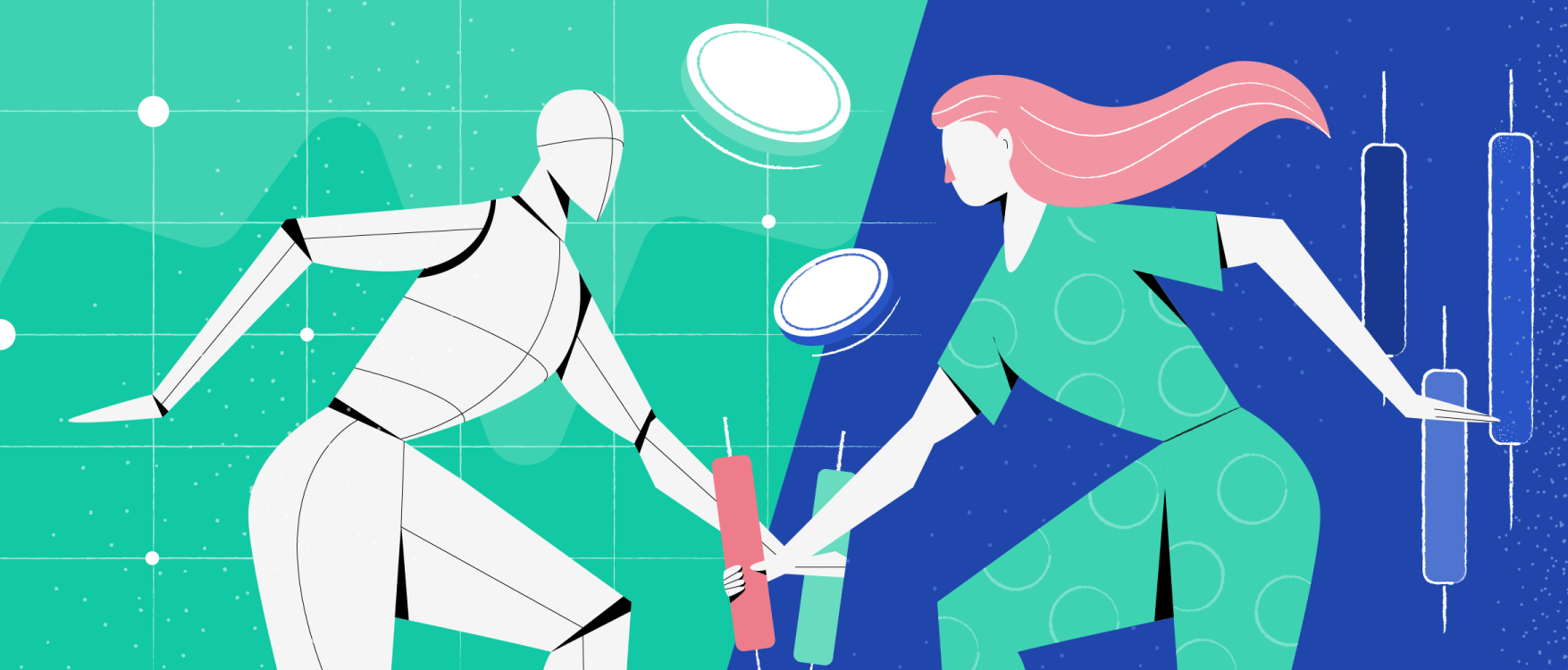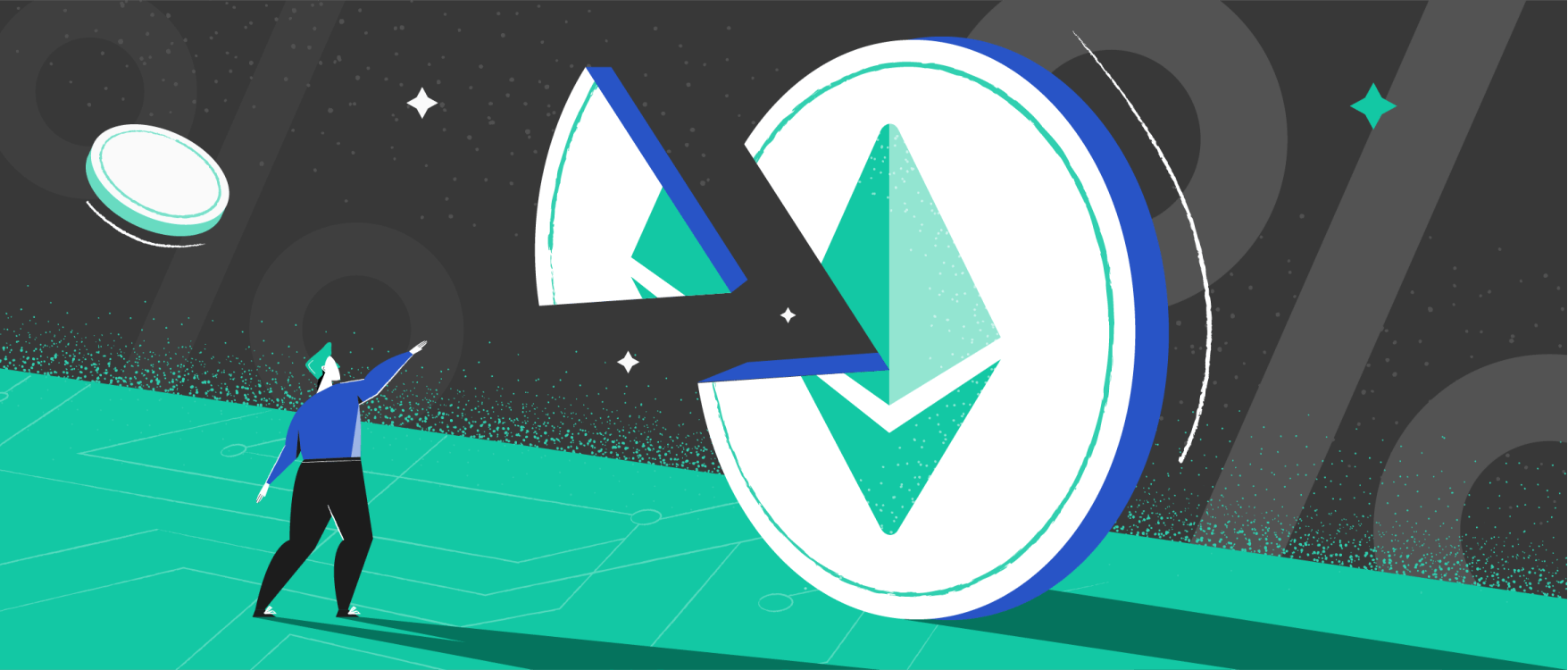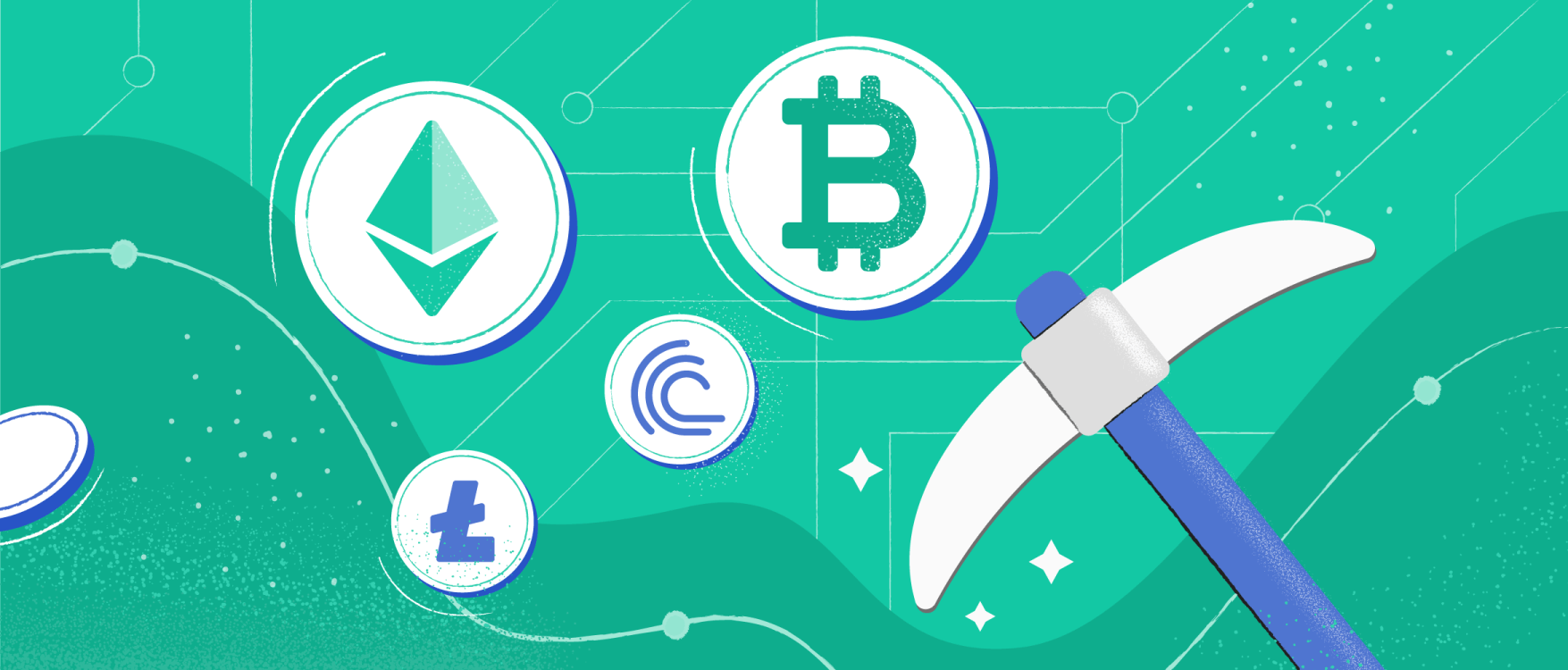
- All
- Tools
- Analytics
- Technical Analysis
- Trading
- Blockchain
- DeFi
- Guides
- Company News
- Educational
- Opinion
- Price Predictions
- Market News
- News
- Trading cases
- Practical guides
- Exchanges
- Trading signals
- Cryptocurrency
- Crypto bots
- Other
Become a crypto master
Learn everything about crypto,
trading and bots

Manual Trading vs. Algo Trading: Which Is Better in 2025?
How to learn more about crypto trading? While exploring various strategies and indicators, you also need to distinguish between manual and automated approaches. This guide shows the difference and explains how they work.
Start Trading on 3Commas Today
Get full access to all 3Commas trading tools with free trial period

What is manual trading?
Manual trading is the process where a trader manually opens and closes positions, as opposed to automated trading, where programs execute trades based on particular algorithms. Those who trade manually use trading terminals to consolidate all the information. They can also set up alerts so as not to miss profit opportunities. No transaction takes place without the trader’s go-ahead.
Pros of manual trading
Manual trading in 2025 continues to have several advantages for traders who prefer a hands-on approach to financial markets. Here are some of the pros of manual trading in 2025:
- All trades are under control. The person decides when to open and close positions by taking into account the current situation on the market. No transactions take place without the trader's consent.
- A broader view of the market. Traders can analyze news and other external factors that might impact the asset price but are often overseen by bots. Plus, they can predict how the market will behave after the release of the new information.
- Quick reaction to changing market conditions. A trader can reveal impactful market trend alterations and adapt his strategy in a matter of minutes. A bot's algorithms, on the other hand, can’t be adjusted automatically in such cases.
Cons of manual trading
- Humans’ capabilities are limited. A person can’t keep tabs on too many assets/pairs and too many indicators.
- It’s impossible to track the market 24/7. Some price changes and trading opportunities inevitably get missed.
- It requires a lot of commitment. It takes a lot of time to analyze indicators and manage all trades manually.
- Not suitable for some trading styles. This approach doesn’t work well with some strategies, for example, scalping (very short-term trades).
How to test a manual trading strategy
Testing a manual trading strategy in 2025 involves a systematic approach to evaluate its effectiveness and potential profitability. To develop your best manual trading system, you need to test various tactics and approaches. For testing, experienced traders recommend opening at least 200 trades and performing them according to your plan. In real time, it would take over a year. With a strategy tester in manual mode, it will take no more than 2-3 hours.
Backtesting can be done on crypto trading platforms, for example, 3Commas, Cryptohopper, Cleo.one, and others.
What is algo trading?
Algorithmic trading is fully automated: a bot opens and closes positions according to market signals. A trading bot is software that’s programmed to open and close deals automatically based on preset algorithms. Bots are programmed to analyze numbers: indicators, price moves, price history, etc.
An algo trading strategy is based on a combination of several parameters. Most often, algorithms are created by bot providers. For example, the 3Commas trading platform also offers a trading bot marketplace. Its users can change such parameters as the maximum number of active deals, strategy, base trade size, safety trade size, and more:
With bots like this one, traders can select a range of currencies or create pair “blacklists”:
Also, users are free to define the source of trading signals:
There are also hand-made bots, which are created by traders who have programming skills. For these bots, parameters are manually set by the owner, and positions are managed according to the trader's strategy. The fewer changeable parameters a bot has, the less the trader's influence.
Bots can be programmed to analyze multiple data sources. When the data coincides with the indicators set up by the owner, the bot will place an order. Some very complex bots analyze several dozen indicators simultaneously.
But does the quality and profitability of trading depend on the number of parameters analyzed by a bot? Not necessarily. Whatever program you use, it’s important to understand what’s inside and how the analyzed indicators work.
Pros of trading bots
- 24/7 availability. A bot will never miss a trade or succumb to emotions. It follows a pre-defined algorithm from the moment it’s launched. That takes the load off the user.
- Ability to quickly analyze data. A trading bot is a computer program capable of powerful calculations. If your trading approach involves either processing large amounts of information in a short period of time or making very fast transactions, automation can help you with that.
- Simultaneous trading of several assets. Bots make a profit with several exchange-traded assets. It is difficult to manually analyze several cryptocurrencies at the same time. If signals start arriving at the same time, some of them can be missed or even confused. A bot will be able to make deals with any number of specified assets.
- Possibility of implementing more indicators. If a user wants to involve additional market signals in the trading process, bots can be used in tandem with the main strategy.
Cons of trading bots
- Complexity of news and fundamental data processing. Trading bots are not designed for news trading and do not always correctly perceive fundamental indicators, for which they have to analyze external sources. Since bots do not understand the causes of news or socio-economic factors, they can make errors.
- Incorrect perception of micro-changes on the market. Your bot may trade well during an uptrend or periods of high volatility, but it may not be efficient enough for a sideways market phase. To avoid losses, it is necessary to constantly adjust the bot’s settings. Plus, it should have built-in risk and money management features. If a bot starts making a series of losing trades, you need to shut it down.
- Unclear algorithms. Programs with incomprehensible algorithms are a black box. They might work in the beginning, but cease to be profitable after a few market changes.
Manual trading vs. automated trading: What is better?
Whether manual trading or automated trading (algorithmic or bot-based) is better in 2025 depends on various factors, including your trading style, objectives, expertise, and the specific market conditions you are trading in. Both approaches have their advantages and disadvantages, and the choice between them should align with your individual preferences and circumstances.
Manual | Automated |
|---|---|
Decisions can be influenced by emotions. | No fears or emotions impact the efficiency. |
No predefined rules for buying or selling. | All the rules of the algorithm are predefined and tested. |
A trader has to monitor the market 24/7. | The bot keeps track of signals and monitors the market constantly. |
Risk management is crucial to reduce losses. | Risk management features are built into the algorithm. |
No guarantee of success, because the human factor impacts the efficiency of strategies. | Each algorithmic approach is backtested, so the chance of success is higher. |
Significant price slippages may occur. | Positions are closed and opened at predefined levels, which reduces slippage. |
A trading system comparison shows that there is no single correct approach: in fact, using both approaches in tandem can bring you maximum profit.
Each trader should follow a certain strategy, but the market is constantly changing, and the trading strategy must be adjusted accordingly. These changes can be either global (asset correlations, reactions to certain statistics, etc.) or local (adjustment to volatility, reaction to levels, breakout / rebound pattern, etc.).
Also, minor changes can accumulate and have a bigger impact than expected, so a trading bot that used to work well may cease to be as effective as before. Hence, both manual and automated trading strategies need timely adjustments.
Remember that no program will ever completely replace a trader. You can't count on a bot and leave your trading terminal unattended. Yes, a bot can facilitate routine work, but a trader must continue analyzing the market (albeit less intensively) and control the process.
2025 Update: Strategic Shifts in Crypto Trading
As cryptocurrency trading infrastructure becomes more sophisticated, traders are adapting their methods to align with new tools, data processing capabilities, and institutional frameworks. This section outlines important updates relevant to both manual and algorithmic trading professionals, with particular attention to the role of automation and artificial intelligence.
The Rise of AI-Powered Automation
Modern algorithmic trading in 2025 is being shaped by a new generation of AI crypto trading bots that go beyond traditional rule-based systems. These bots incorporate machine learning to adjust their parameters based on changing market behavior, analyze real-time sentiment data, and incorporate macroeconomic indicators into their models.
Today’s top AI bot crypto trading tools offer deeper functionality: multi-indicator filtering, volatility triggers, and market anomaly detection — features that enhance decision-making without requiring manual input. As the availability of historical datasets and live feeds expands, these AI bots for crypto trading are now essential for traders seeking responsive execution without sacrificing oversight.
Enhancements for Manual Traders
Manual traders continue to benefit from broader access to institutional-grade analytics and order management systems. Platforms now include high-resolution charting tools, complex alerting mechanisms, and integrated news pipelines. These additions help bridge the gap between discretionary strategies and the automation layer — allowing traders to combine intuition with data-driven discipline.
In response to this hybrid trend, several auto trading crypto bot interfaces now include manual override functions and visual tools for strategy refinement. Traders can test scenarios within a bot framework while retaining discretion over entries and exits.
Market Infrastructure and Professional Adoption
With the arrival of more structured regulatory policies across key markets, professional asset managers and funds are incorporating automated systems into their crypto exposure strategies. The result is increased demand for secure, reliable automated crypto trading bots that meet both performance expectations and compliance requirements.
There’s also a shift toward multi-asset support. Whether managing altcoin bot trading portfolios or rotating among sector-based assets, professionals expect flexibility across spot and derivatives markets. Software providers that can deliver integrated access to both — without compromising risk controls — are becoming central to institutional workflows.
3Commas: Enabling Both Human and Bot-Driven Strategies
As a software provider, 3Commas continues to support both sides of the trading spectrum. Its tools are designed for users who want to automate crypto trading without deep programming knowledge, and for those building custom, high-frequency strategies. The platform offers configurable automated trading bot crypto setups alongside analytics, trailing logic, and cross-pair execution — making it suitable for discretionary traders scaling their operations, as well as algorithmic teams optimizing latency and logic.
FAQ
This is a process where all deals are opened and closed by the trader personally. A person analyzes the market and is responsible for entering and exiting positions at the right moment.
Deals are opened and closed automatically by a trading bot, special software that analyzes technical indicators and the asset price history to predict its movements and make profit on them. Since bots don’t have emotions like fear or impatience, they trade more consistently. This approach means a trader doesn’t need to monitor the market 24/7, but can manage positions automatically.
With manual trading, you should be prepared to dedicate a lot of time to market analysis and make decisions on your own. Algo trading requires basic technical knowledge for you to understand the algorithms at the core of a bot and avoid buying a black box. A combination of both methods is likely to be the most fruitful.

A proven leader, successful at establishing operational excellence and building high-performance teams with a sharp focus on value creation and customer success.







